If you enjoyed this review make sure to check out our weekly actual play podcast where Jason and the team are playing the Starfinder Dead Sun’s adventure path as well as the occasional Starfinder Society adventure as well.
The Starfinder Armory is finally here. If the Alien Archive and Pact Worlds releases were mostly for the benefit of the GMs, the Armory is very much a book for the players – a world of new toys for your characters to play with.
The first big-picture question everyone’s going to ask: “is there cool stuff I’m going to want to run right out and buy for my character(s)?”. (Or, if you’re an alt-aholic like me, “make you want to roll up a new character that can use that piece of gear”.)
Short answer: yes, but that would either make for a really short review, or it would turn into that Chris Farley SNL sketch where I just list pieces of gear at random and say “that was cool” after each one. Neither approach strikes me as very satisfying.
Instead, I’d like to approach this from the standpoint of the questions I had in my head when I got to sit down with this book. I will probably come back around at the end and give you the Farley list anyway, but for the moment, let’s focus on a few more specific things that were on my mind.
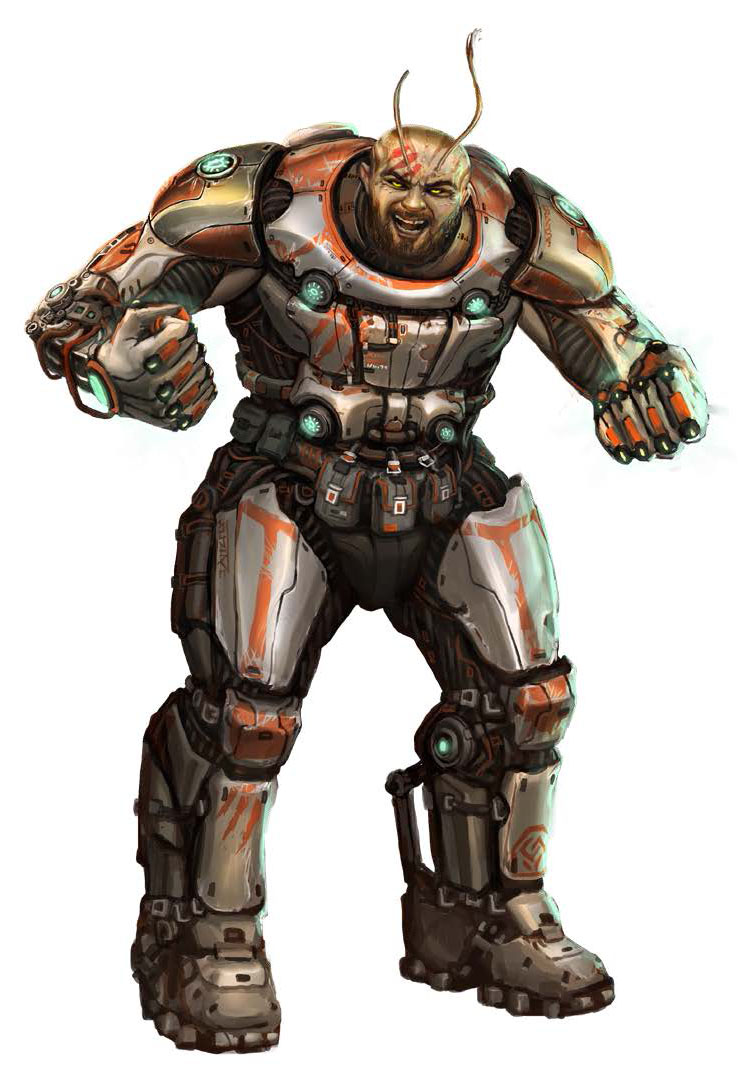
GENERAL QUESTION 1: Does the Armory truly break new ground and expand the game content, or is it just N+1 versions of what’s already there? Particularly for a game system as new as Starfinder, I’d expect to see some new ideas getting introduced, not just “well this is the gun you already had but the laser beams are green now!”.
I’m going to go ahead and give the Armory a solid passing grade on this front. There’s nothing revolutionary – they didn’t backdoor a new class in or add an entirely different form of combat – but you wouldn’t expect that from an Armory book anyway. This is about the gear. What you do get is some good solid extension of the ideas contained in the Core Rulebook.
Take weapons. Yes, you get the MORE – particularly on melee weapons, where they’ve dramatically increased the options for energy-based melee weapons – but you also get weapons with the “conceal” trait, that can be more easily smuggled into places, or the “integrated” trait which lets them be mounted into an upgrade slot instead of taking up a hand. (There are even a few options for tail weapons for your vesk and ysoki friends!) There are profession weapons that can both act as a tool for use in the profession, and ranks in the profession can be used to obtain proficiency in the weapon. Weapon accessories give you the common real-world mods – scopes, silencers, and so on. Want a grip to hold your flashlight or a bipod for that sniper rifle? Done, and done.
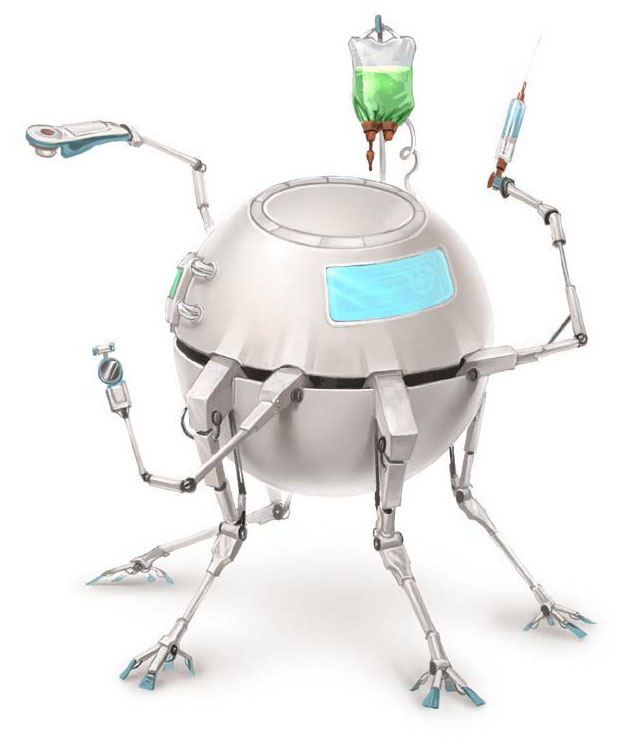
Some concepts from core get more fully fleshed out in the Armory. Weapon materials are one such concept – the Core Rulebook listed the three traditional Pathfinder choices (adamantine, cold iron, and silver), but they’re almost all about overcoming damage reduction. The Armory adds six new options and the effects are more dynamic. Abysium is slightly radioactive so weapons made from it can apply the Sickened condition. Dzejet is more receptive to magic, making it easier to apply seals; armor made from it is caster-friendly, increasing the range and duration of spells. Horacalcum has weird space-time properties – on a weapon, it can create the Staggered effect; on armor, it helps with initiative checks and saves against Staggered.
Powered armor is another thing that goes from more of a placeholder treatment to a fully fleshed out category of gear. The Core Rulebook’s coverage of powered armor was kind of sparse – “here are five rather generic chassis options; customize them as you see fit”. It felt like they knew powered armor was something that was supposed to exist in a sci-fi game system (see also: Ripley cracking alien queen skulls with a cargo loader), but they hadn’t really decided what to do with it yet. Is it just the next armor after heavy? Is its own thing somewhere between vehicle and armor? The Armory gets deeper into it (17 new options, though a few are variants of each other) and comes up with options flavored for different cultures and different applications – here’s one that’s good for underwater use, here’s one that’s more oriented toward casters, this one has tools for cold weather environments. (And with the Stag-Step Suit, here’s one if you want to wear antlers on your head and feel like teleporting, because… well, who doesn’t?)

For another example, consider our friend the grenade. In the Core Rulebook, grenades were mostly about damage – how much and what type. In the Armory, they lean into a broader range of effects with hybrid grenades. A Diminisher Grenade can reduce the duration of ongoing effects in an area, a Microbot Grenade creates (essentially) swarm damage in an area, a Summoning Grenade warps in a creature to fight for you (Pokemon Go, but in reverse!). But the piece de resistance are Wonder Grenades. Roll a d100 and random stuff happens. Maybe everyone turns invisible! Maybe it creates a vacuum in the area! My personal favorite… maybe the area is filled with adorable, harmless Diminutive animals (tribbles?) that create difficult terrain.
In the “totally new” (at least in terms of usable items) bucket, we have the necrograft. Necrografts appear in the Core Rulebook as a throwaway line in the description of Eox – “some come seeking necrografts, undead prosthetics that are often cheaper than cybernetics”. Well… here they are. You can get a necrograft version of an existing augmentation, or the Armory gives you undead-specific choices, such as the Black Heart, which gives you the environmental bonuses of armor and increased saves against most things that affect the living (sleep, paralysis, etc.). Better read the paperwork, though – the minute you install one of these, you gain the necrograft subtype, which makes you kinda-sorta undead. (Ummmmm… Rusty? Is there anything you want to tell us?)
I could go on – there are new class options for each class, “domestic” drones that perform non-combat chores (including a robo-mule), the magic and tech items really feel like they focused on broadening rather than deepening, etc. – but to answer the question – yes, it does feel like more than N+1 gear.
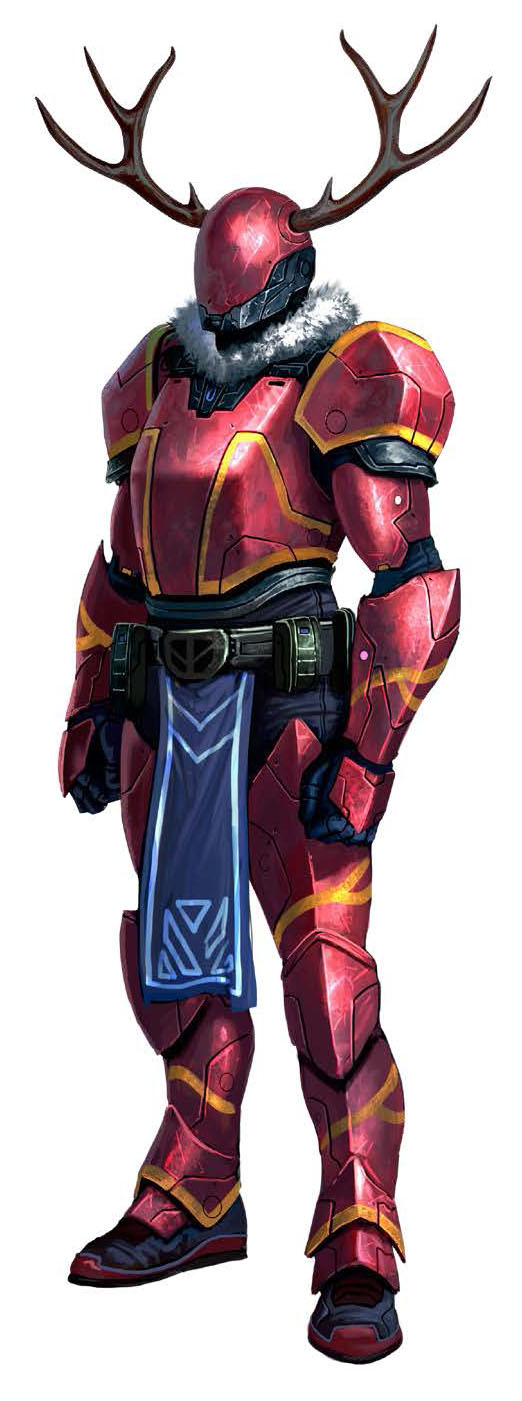
GENERAL QUESTION 2: The second thing I wanted to see going in was whether they could still fit in the “stealth world-building”. One thing I really appreciated about the Alien Archive (in particular) is the way Paizo snuck in world-building lore around the edges, so it wasn’t JUST a laundry list of creatures. Were they able to do something similar with this book?
Again, I think they hit the mark pretty well. For a prime example, let’s go back to those necrografts. Did you know it’s possible to get a necrograft for “free”? Now that sounds good and all, but to do that, you have to participate in a “corpse lease” program where if you die, you’re agreeing to let the Eoxians harvest your body to create more undead. PAY IT FORWARD! That just brought a huge smile to my face: not just because it’s the nightmare scenario of not reading the Terms and Conditions, brought to life, but also that it really fleshes out (pun semi-intended) the Starfinder universe.
Another example: weapon manufacturers. There are a few pages at the end of the “weapons” section that talk a little bit about various arms manufacturers of the Pact Worlds. At a nuts-and-bolts level, you can pay a small bump in weapon cost to get the in-game effect offered by a particular manufacturer. Ereus Teletech is based on lashunta telepathy, so their weapons have a psychic signature and can only be used by the owner. Ichihara Holdings has perfected their use of modular parts to such a degree that their weapons are easier to repair. Zeizerer Munition specializes in ammunition, translating to larger ammo capacities. And so on. The in-game effects are certainly useful, but you also get this neat little dump of world lore that I find fascinating.
So yes, you get lore… maybe not galore (even though it rhymes), but they did manage to pack some tidbits around the edges.
Those were the biggest general concerns, and I think the Armory delivered pretty well on those. I also had a couple “pet peeve” issues that have cropped up over the past year playing, and I wanted to see if maybe the new gear in the Armory shed some new light on those things.
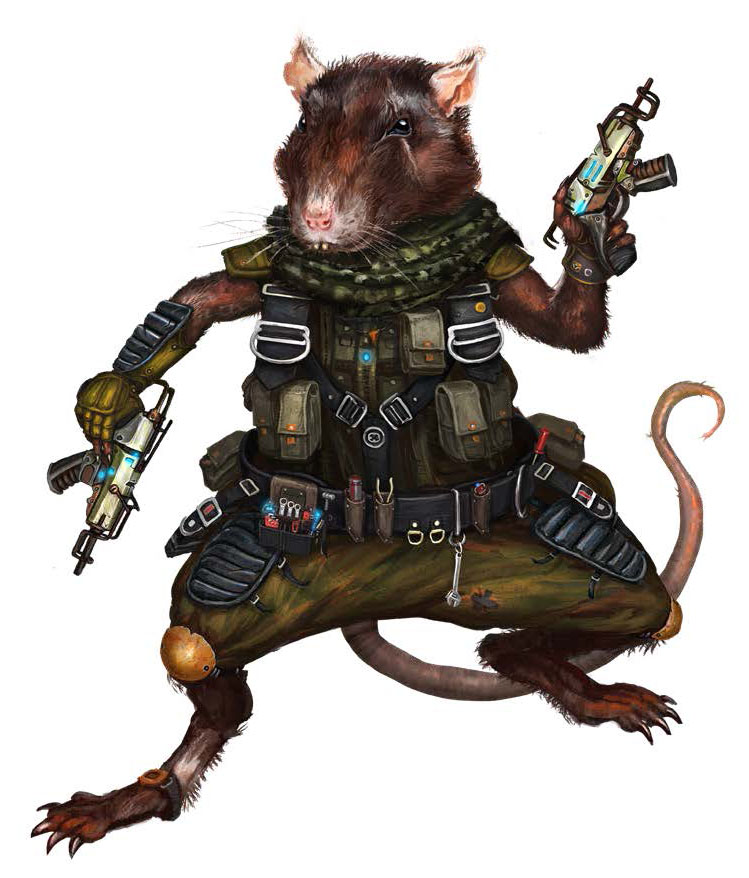
PET PEEVE #1: Healing
I am still not crazy about healing in Starfinder. At least for our Dead Suns group, I know part of it is our group’s fault for not having a Mystic. I acknowledge that Stamina points are fairly easy to replenish and you’re probably not “supposed” to get into Hit Points as much as we do. But the economy of healing still feels a little off. Mk 1 Healing serums don’t do much at all, but the other levels of serum get too expensive, and there’s no real equivalent of the healing wand.
Did they address this at all with the Armory? Well… sorta. There still doesn’t appear to be a one-touch option like a healing wand, but there do seem to be a few items that add a regenerative impact to the short rest, so that the short rest gives you back stamina and health. The “Medical Interface” armor upgrade is one such item, as is the Regenerative Blood augmentation. On the poison/disease side, they did go with more of a wand-like solution, the Nanite Hypopen – different colors for different effects and strengths. So they get partial credit for this – they didn’t add my dream item (no fire-and-forget Star Trek hypospray), but they also didn’t ignore the issue entirely.
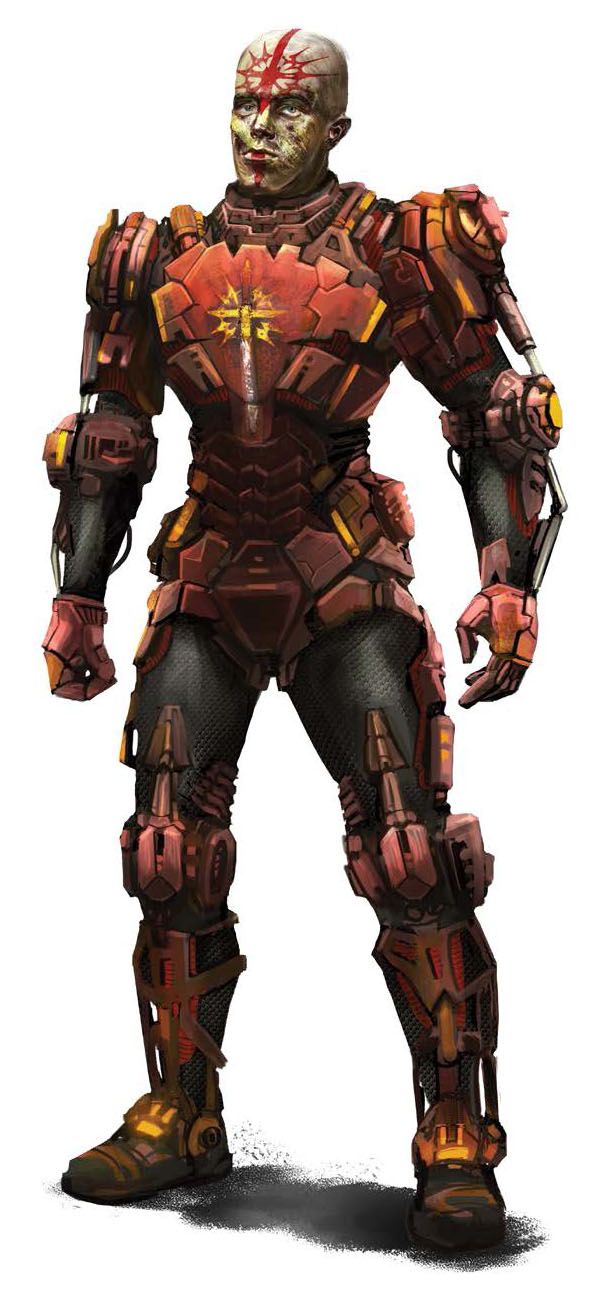
PET PEEVE #2: Fusions
I’m also not sold on the whole fusion system yet. Maybe it’s just dumb luck that so far, the fusions we’ve run across as loot were ones we couldn’t use, but the whole item level/fusion level/weapon type dance still feels a little clunky and frustrating. Maybe once I get the right one for my weapon at the right level, I’ll feel differently, but for now… ehhhh.
The content in the Armory… well, it doesn’t really change my feelings about the system, but there are some cool concepts for seals here. The Tracking seal makes it so that once you’ve damaged an enemy with that weapon, you have tracking within 1000 feet (as long as you’re still holding the weapon). The Conserving fusion refunds your ammo if you miss. Bombarding is a seal for grenade use, and it’s pretty freaky – you attach it to another weapon, it copies a grenade into extra-dimensional space, and you can fire a mystic copy of that grenade once a day.
The ones that piqued my interest are the ones that play around with spatial relationships – the Continuous fusion lets you extend the duration of a line weapon’s shot until the beginning of your next turn, so in the meantime, anyone that wants to go through those squares gets hit. (Or, if your beam is stopped by an obstacle, a teammate could move that obstacle and give the beam a chance to hit new targets.) The Rebounding fusion lets you bank a shot off one surface at a -4 penalty, so you can potentially get around total cover by shooting off a wall. I’m not sure the math is great on a -4 and it seems like it treads similar ground as the Seeking fusion from the core rules, but it’s a total hero move. (“You missed!” *P-TING!* “Did I?” Enemy drops.)
So final analysis, I have to admit I’m still lukewarm about fusions as a whole. Maybe I’ll get there, but nothing in the Armory really served as a game-changer or cast it in a new light.
THE FARLEY LIST
OK, having dispensed with my major points, I’m going to finish up by bouncing around the book and pointing out a few things that jumped out at me. You know – the jazz improv portion of the review, if you will.
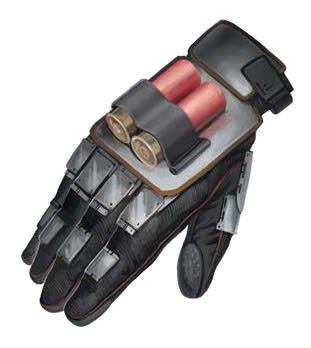
- Shell Knuckles: take a standard punching glove, load the knuckles with shotgun shells. Low-tech, but wonderfully violent.
- Shadow Chains: chains that do cold/darkness damage. Originally weapons for Zon-Kuthon worshipers, but other people made copies that hopefully aren’t 100% evil. Very gothy.
- Nanite Weapons: more of a class of weapon than a single weapon, you hit with these weapons, and they release nanites that burrow into the target and do damage. Some of them, you don’t even have to hit the target; if you get close, the nanites will cover the rest of the ground themselves.
- Clearweave: more of a roleplaying thing, Clearweave armor can either be transparent (so people can see the outfit you’re wearing underneath) or can project patterns, logos, etc. Just in case you want your character to make money on the side renting out ad space.
- Lashunta Mind Mail: armor that responds psychically to the user’s needs, it’s rigid when you’re about to be hit, flexible when you need more movement – that just strikes me as a cool concept no matter what the actual stats work out to.
- Stag-Step Suit: Teleportation. It bears repeating.
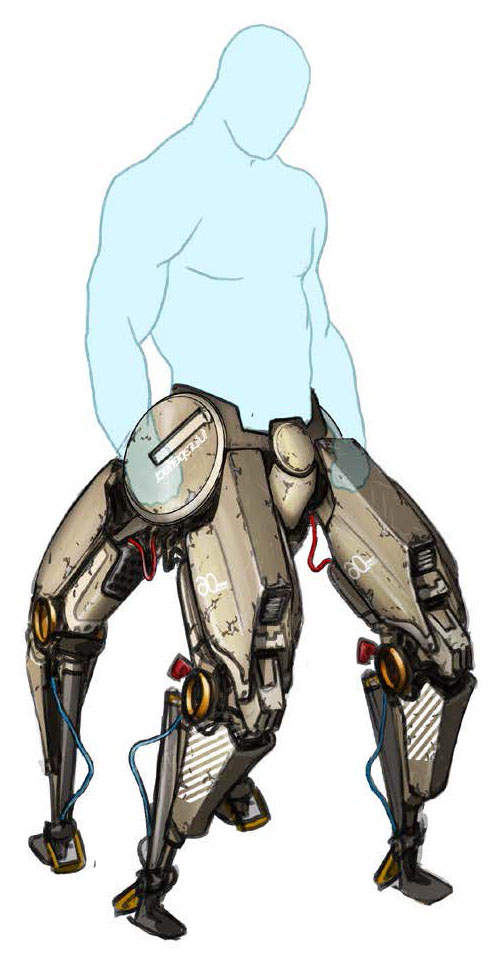
- X-Legs: An augmentation that lets you replace your legs with a four-legged spider-chassis. And yes, there’s a climbing version that lets you walk on walls and ceilings.
- Restless Pineal Gland: an augmentation that lets you get your abilities back with 2 hours of rest, but only once per day.
- Disintegration Hoop: It’s a Level 20 item that does 4d20 damage just putting an appendage in it, 14d20 if fully inside the hoop. I don’t need to know more than that, and neither do you.
- Teleportation Puck: Activate the puck and throw it, and then you (and possibly others) can teleport to its location. Seems like it would be handy in combat to get flanking, or for overcoming certain obstacles (chasms, falls or climbs, etc.)
- Software Imp: Think “sentient computer virus”. It’s an artificial personality that you can load on a computer that can cause all sorts of trouble – access information, can try to trick users into giving it further access, can run incorrect commands, etc.
FINAL ANALYSIS
In some form or another, if you’re playing Starfinder, you’re going to want this book on your shelf. If you’re a little skittish about paying full price for a fairly short hardcover (160 pages), the PDF at $10 is a total steal. Either way, get it and get started on all the characters you’re going to need to make use of all of this stuff.

